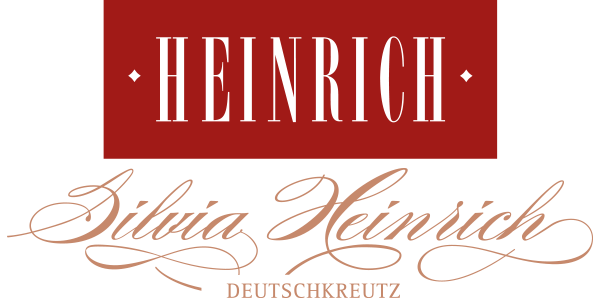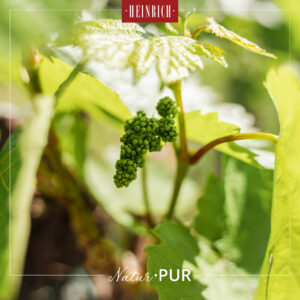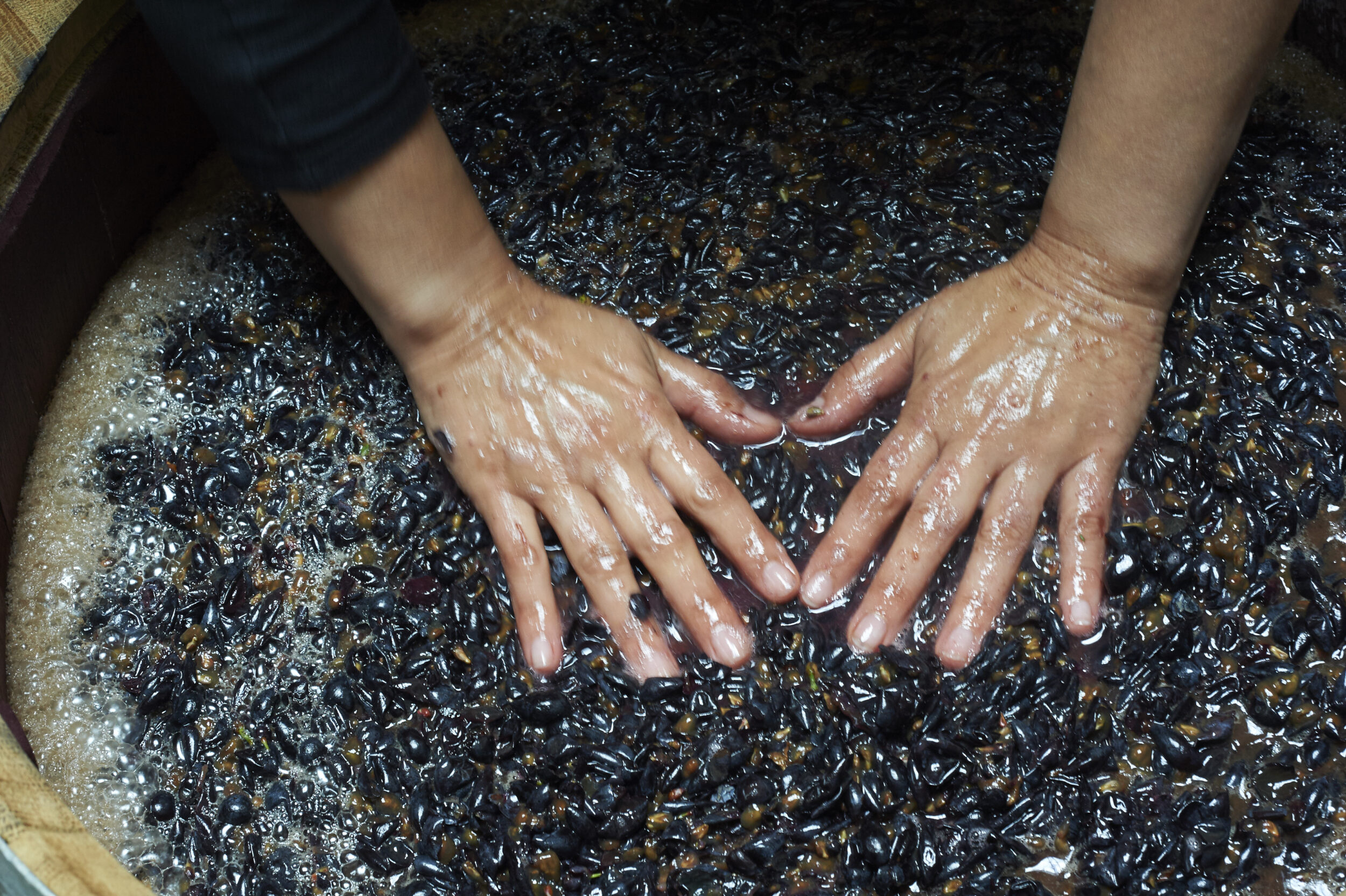
Welcome to our Wine Diary
Here you will find stories about our latest adventures all around the year. Our family-run winery is located in the sunny middle of Austria’s most eastern state Burgenland.
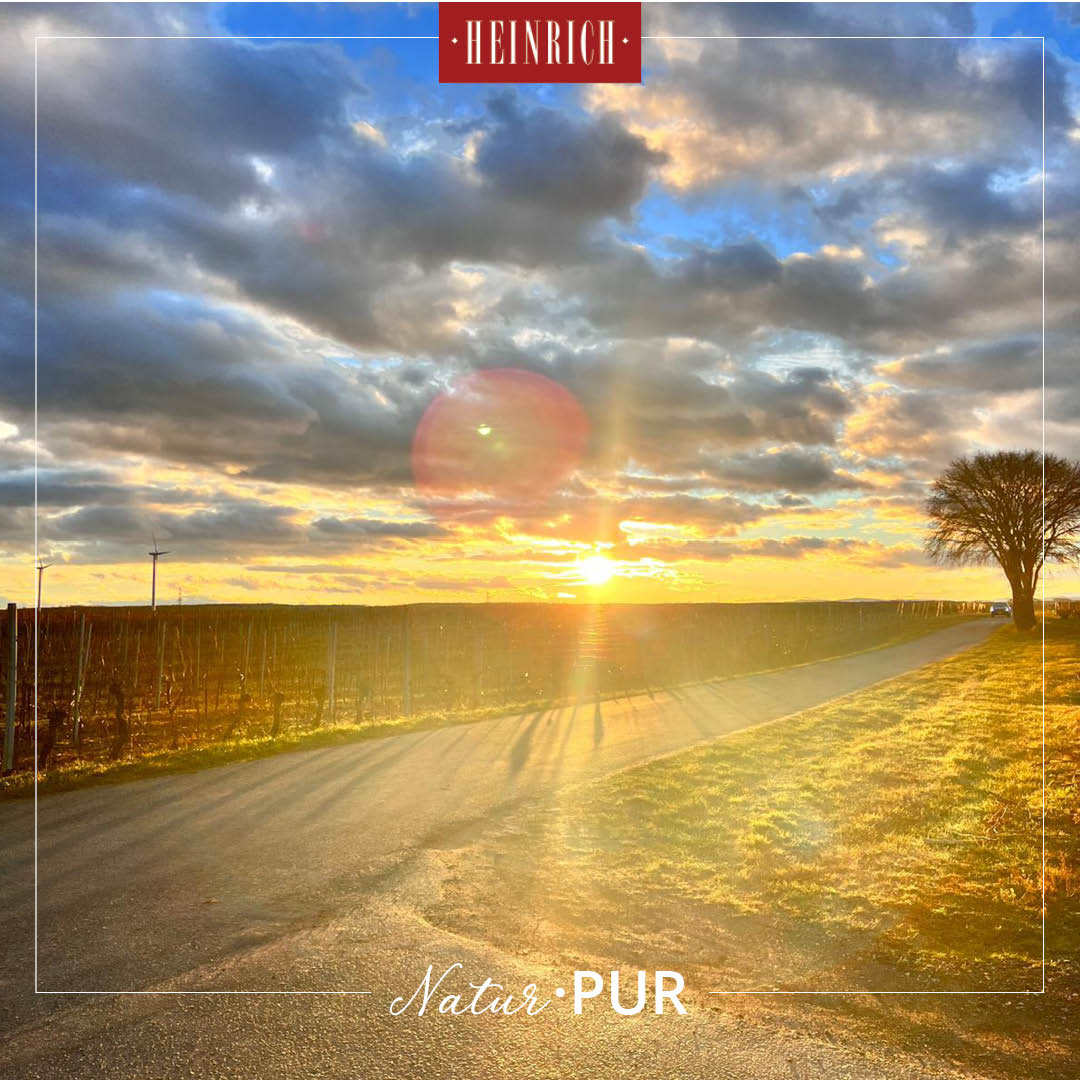
January 2024
WINTER SUN
The sun shines beautifully on the southern slopes of the Ödenburg Mountains. That’s where I grew up and were I am grounded. My family has lived here for generations and our vines have been growing here for centuries. They are protected from the cold winds from the west. Warm and dry wind can flow in unhindered from the Pannonian lowlands. In the vineyards you can only hear the pruning shears cutting back the shoots. We have been using gentle pruning for many years to keep injuries as small as possible.
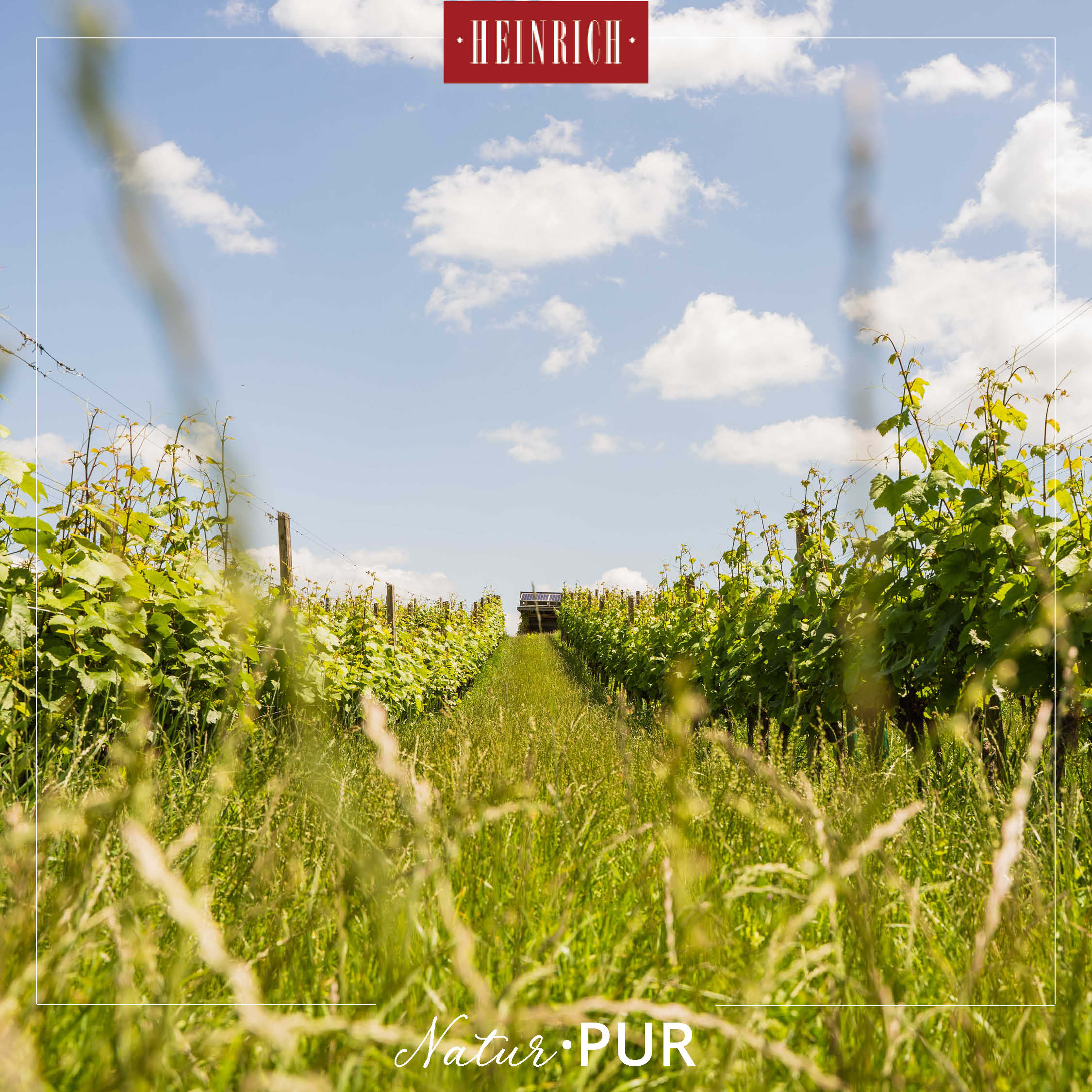
June
Magical moments in the vineyard. The flowering has begun. The Vitis vinifera vines are oogamous, they virtually pollinate themselves. The flowers are closed with a brown cap that bursts open to reveal the pistil and stamens. Pollination occurs when the male pollen sticks to the female ovary. Rain or strong winds could prevent all the ovaries from being pollinated. Therefore, we hope for sunny weather so that there is no “trickling”🙏🏻😍
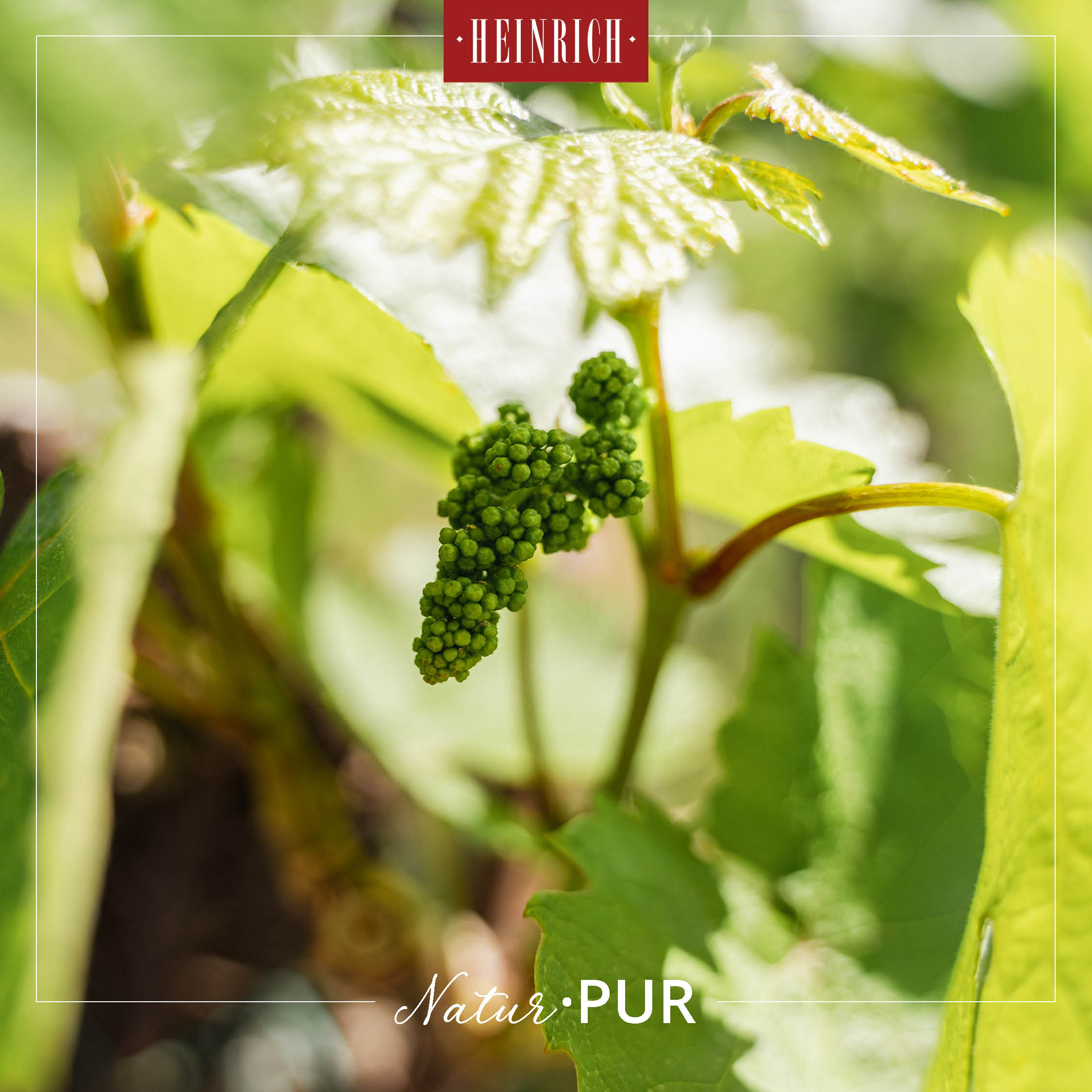
May
A wonderful natural spectacle is underway. The flowering of the vines will start soon and will only last a few days. That’s when the right weather for good fertilisation is especially important. The blossom is the so-called “Geschein” and exudes a very subtle and incomparable fragrance.

April
The spring temperatures are rising and the days are getting longer … the vines are waking up from their winter sleep and the buds are starting to swell and burst. This process is also called bud break.
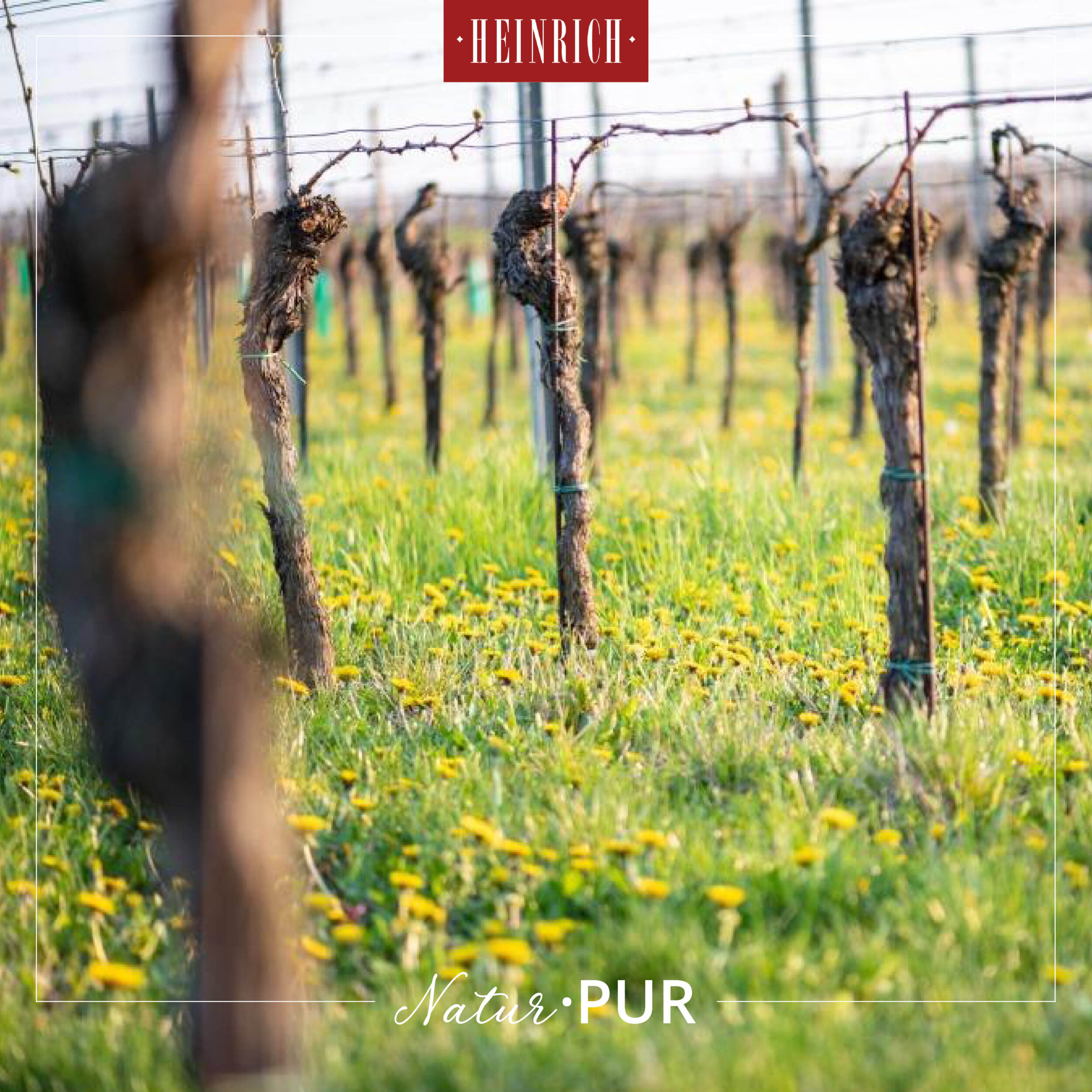
March
Just before Easter we finish “tying up” in the vineyards. The spring temperatures are rising and the days are getting longer … the vines are waking up from their winter sleep and the buds start to swell and burst. This process is also called bud break. The vine is a liana plant and strives to grow upwards. To do this, it supplies the eyes (buds) at the end of the route with the most nutrients. By bending and tying to the wire frame, sap builds up and the sap flow is distributed to all eyes so that all eyes are evenly and well supplied – for optimum quality. 🌞🌱🍷
Sub-zero temperatures are the biggest threat to our vines at this time of year. #nofrostplease
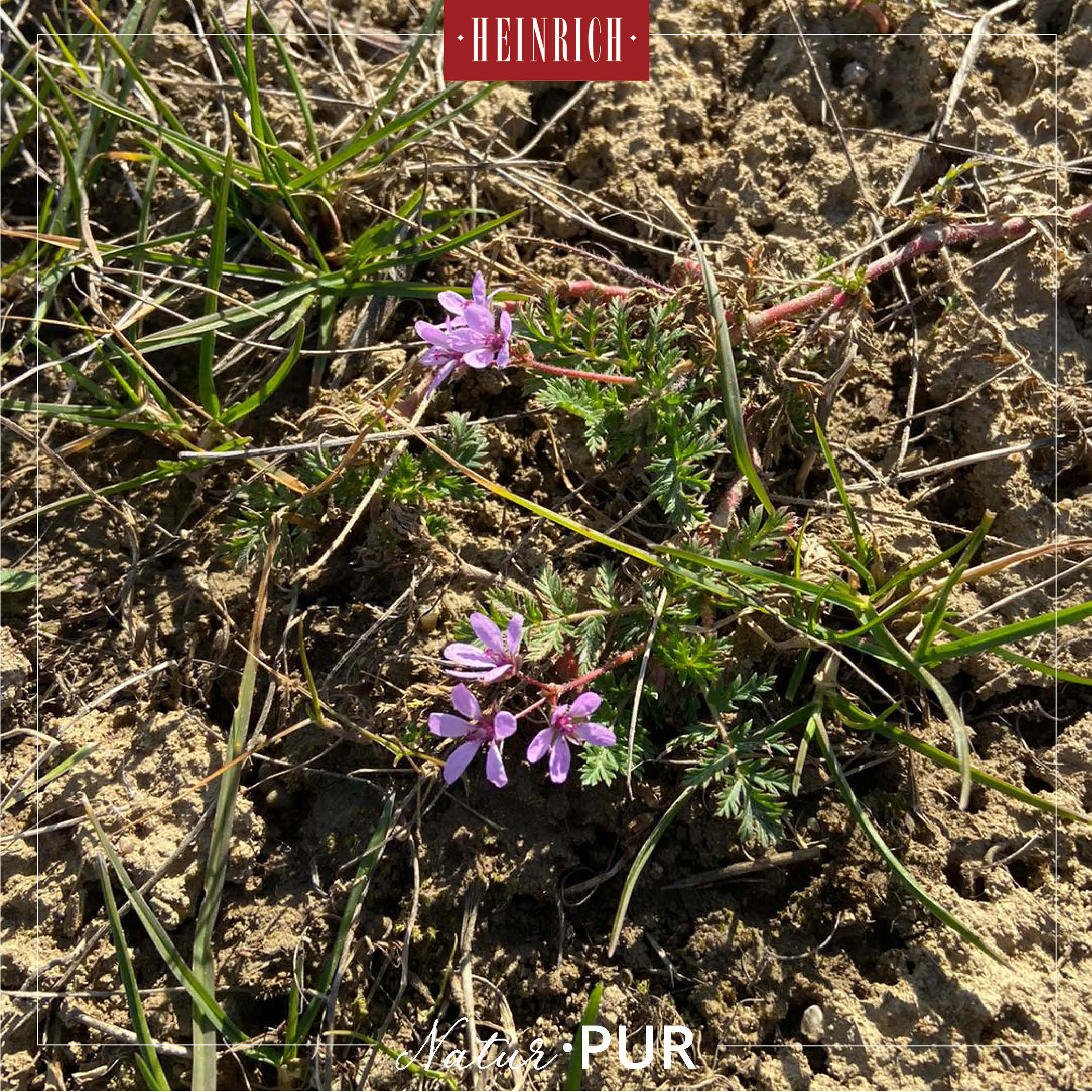
March
The month when nature awakens but the vines still rest. We have finished pruning, the first important work of the year, because already now the quality of the grapes is defined. 💪 The focus is now on repairing the wire systems and chopping the cut vines, followed by bending and tying the fruit canes onto the lowest wire. This is work that can take place when the daytime temperature is above 10° C, because then the vines are more pliable due to the flow of sap. 🌞🌱
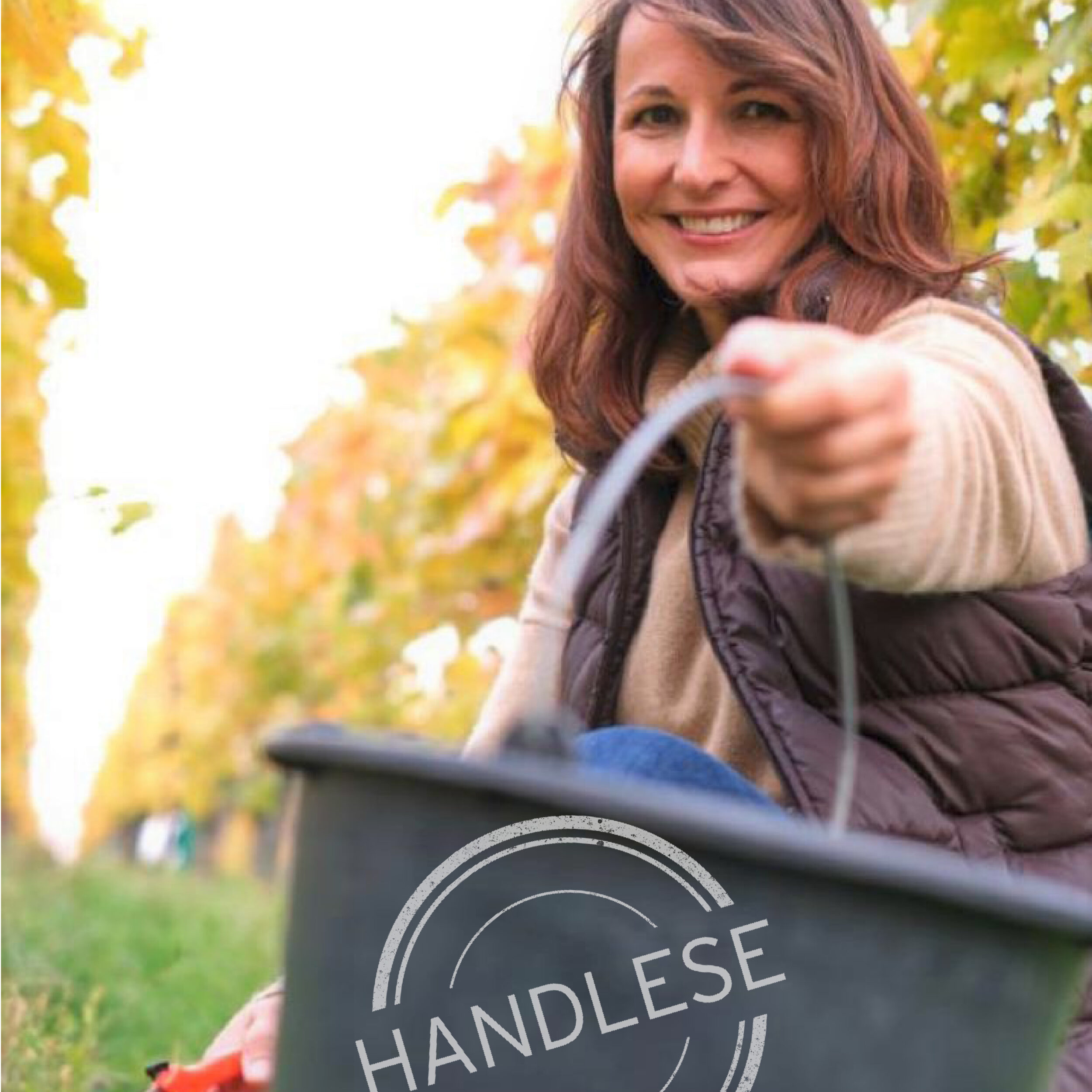
October
We are overjoyed to have brought in this year’s harvest well. Our team, my family and the many helping hands have once again given their best with much joy and total commitment, and you can feel and taste that with every sip. A good 2021 vintage is now maturing in the cellar. ![]()
![]()
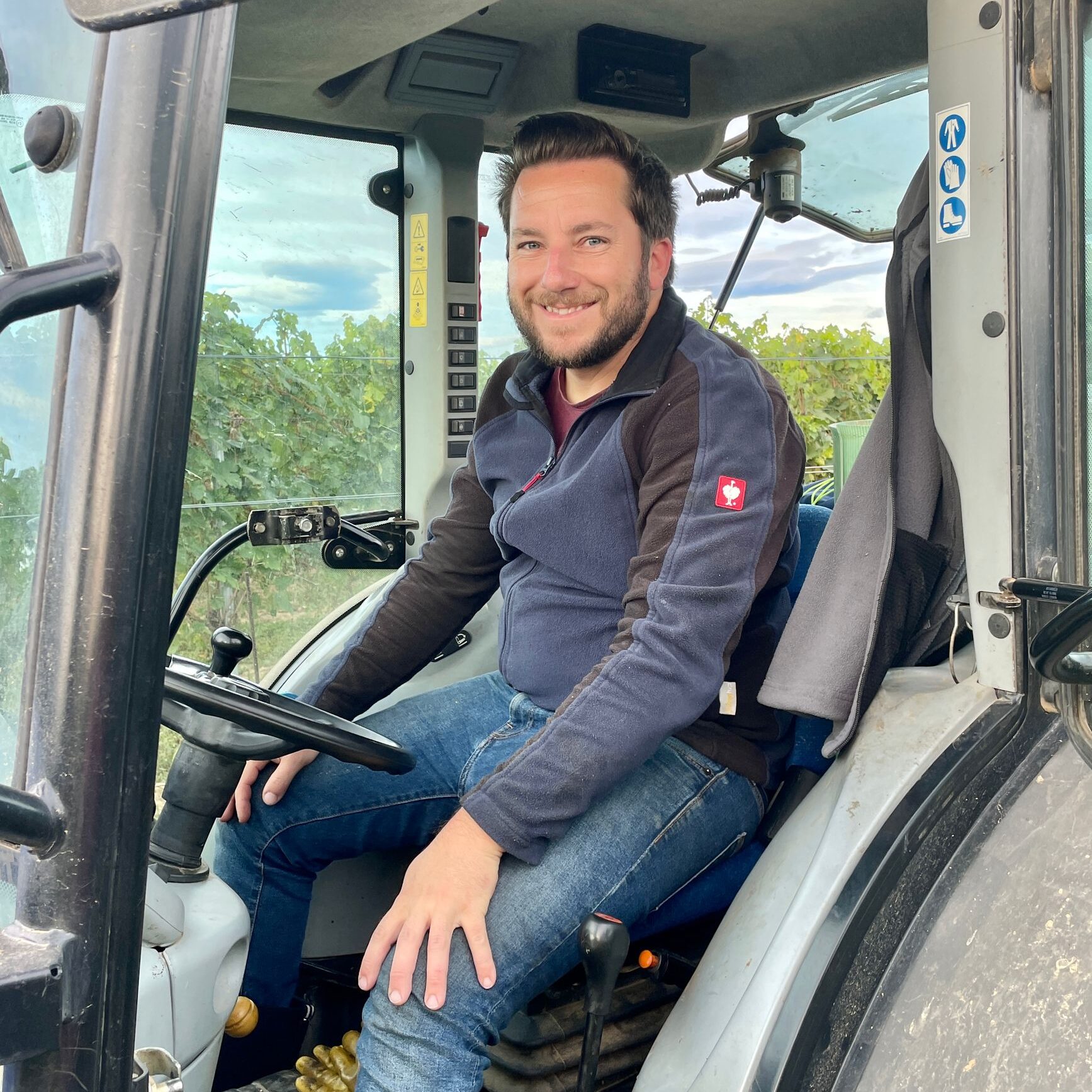
October – Harvest
Almost done. The fifth (and hopefully) last harvest week with the third pass of the best batches of our Blaufränkisch, Cabernet Sauvignon and Cabernet Franc has started. We harvest the best grapes in two passes – all grapes by hand – and these are already selected on the vine. Mario is responsible for the vineyards and visibly satisfied with the quality. The countdown is on. The weather holds, the quality is unique. Fingers crossed.
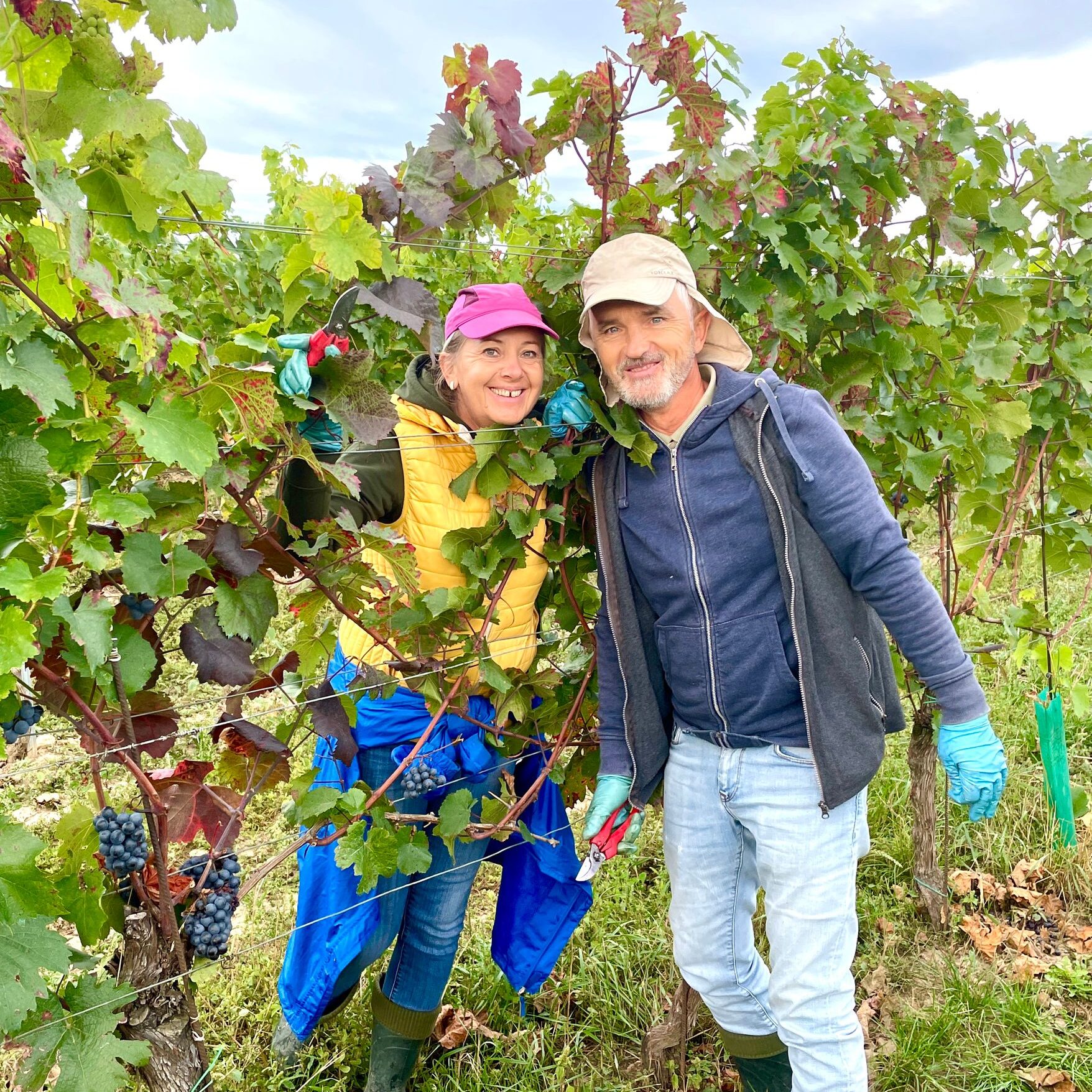
October – Harvest
Andor and Erika are our dream team and have been with us at the winery for over 30 years.
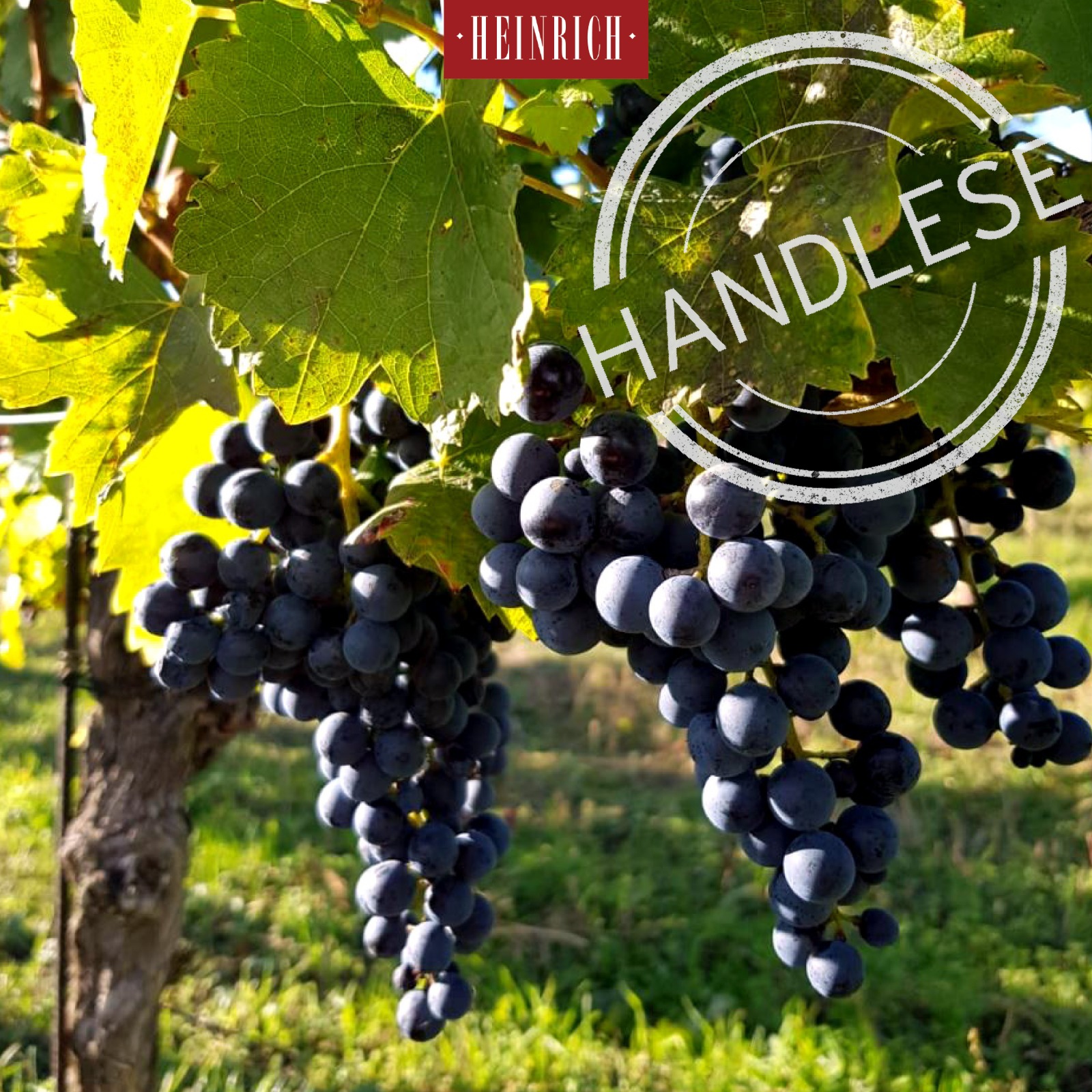
October – Harvest
With us, all grapes are harvested by hand. Why? Only the hand harvest allows a selection of the grapes already in the vineyard and a harvest of the grapes at the optimal time. Not all of them are ripe at the same time. That is why we harvest in up to three rounds. In addition, hand harvesting gives us the certainty that the grapes reach the cellar unharmed and without any leaf residue.
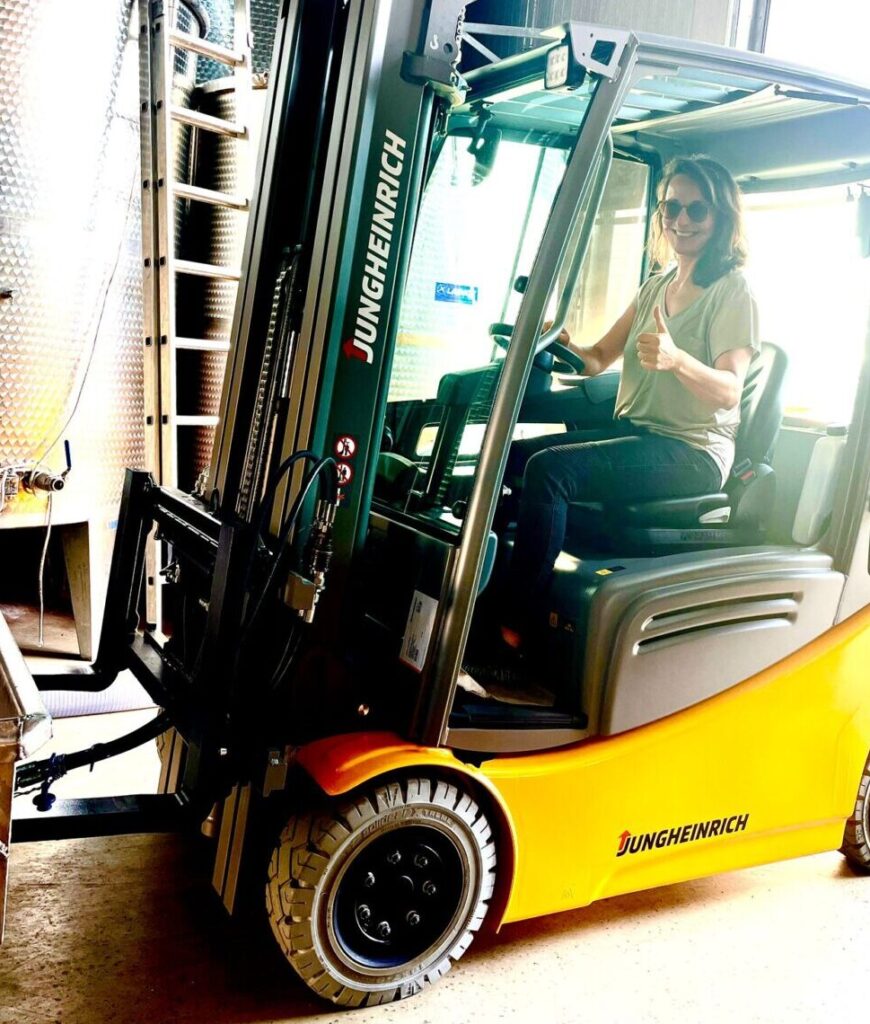
October – Harvest
Yeah! My favourite thing to do… Our Zweigelt 2021 from Ried Siglos is fermented and will be pressed today! Jungeheinrich at the new Jungheinrich 😉 We will also be picking tomorrow Saturday, as bad weather is forecast for next week … so, no quiet weekend ahead …
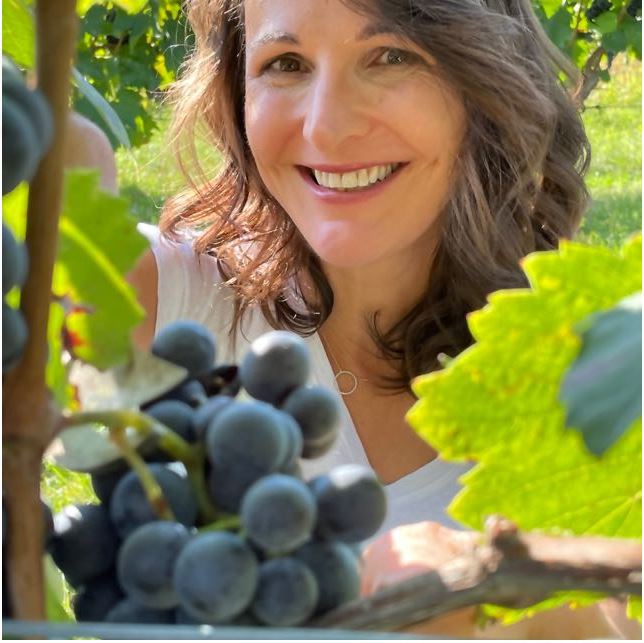
September – Harvest
Happy! The first harvest week is coming to an end. This week we harvested our Zweigelt grapes in consistent autumn weather with lots of sunshine. Next week we will take a few days off from harvesting so that the Blaufränkisch grapes can benefit from the warm autumn sun and ripen perfectly. By the way, ALL grapes are (still!) harvested by hand!
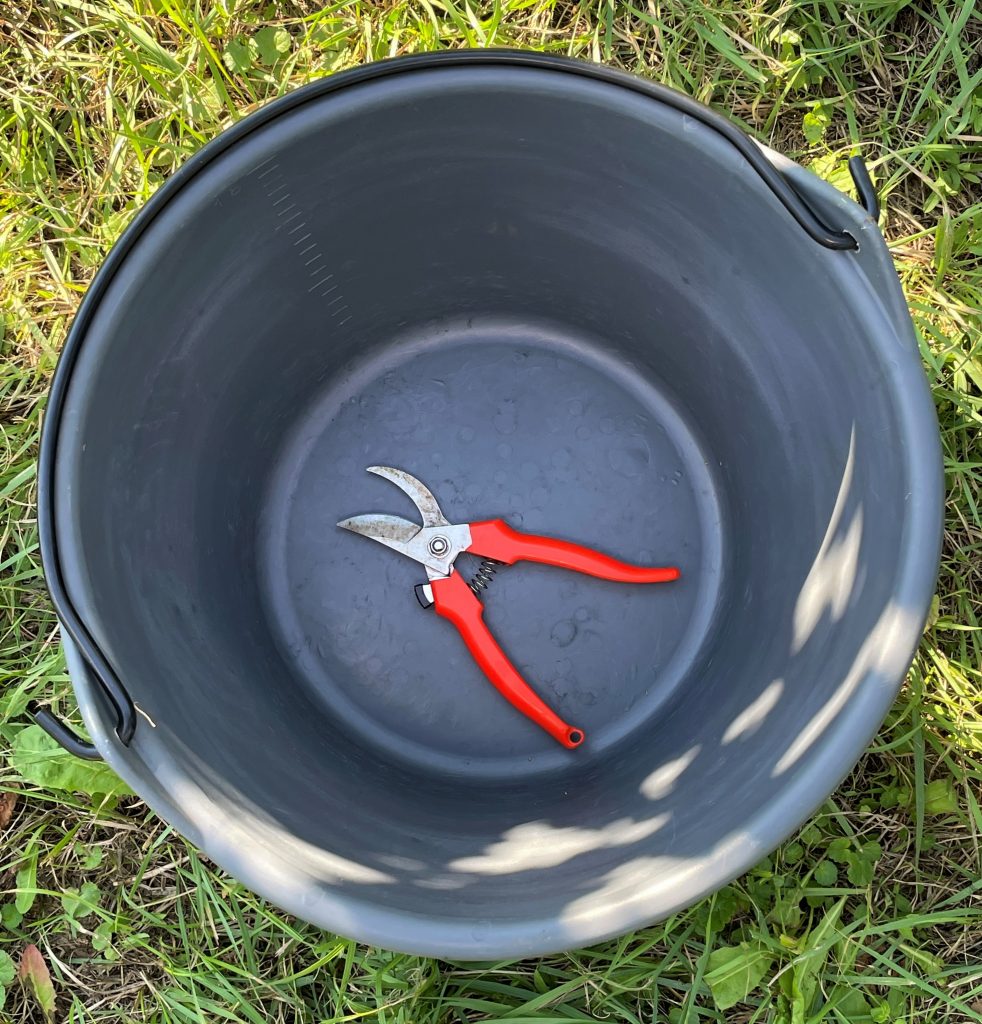
September – Harvest
Let the games begin! 🙂 Full of euphoria and zest for action we start the HARVEST 2021!
We start with Zweigelt in the Alte Weingebirge. We start to manually cut out the grapes that were affected by the hail to give the other berries a few more days to ripen.

August
Physiological ripeness is shown by a harmony of sugar and acidity, by a taste ripeness, by ripe tannins, mature, lignified seeds, a largely liquefied pulp and a soft skin with pleasant-tasting tannins.

August
With the 100-grape sample we can observe the development of ripeness. To do this, we collect individual berries in a vineyard in order to be able to measure an average value of acidity and sugar. At the beginning of grape ripening at the end of July, the vine stores almost exclusively acids in the softening berries. To do this, it “converts” the sugar formed in the leaves via photosynthesis into tartaric and malic acid. In hot, dry vintages, the vine usually cannot use the abundant sunlight to the same extent as in wetter ones, because it lacks the water necessary for photosynthesis. During the ripening phase that now begins, the sugar content of the grapes increases relatively evenly over a long period of time. While sugar and acid content are strongly dependent on temperature and higher temperatures can accelerate ripening, flavour ripening takes about 100 to 110 days from flowering, almost regardless of temperature.
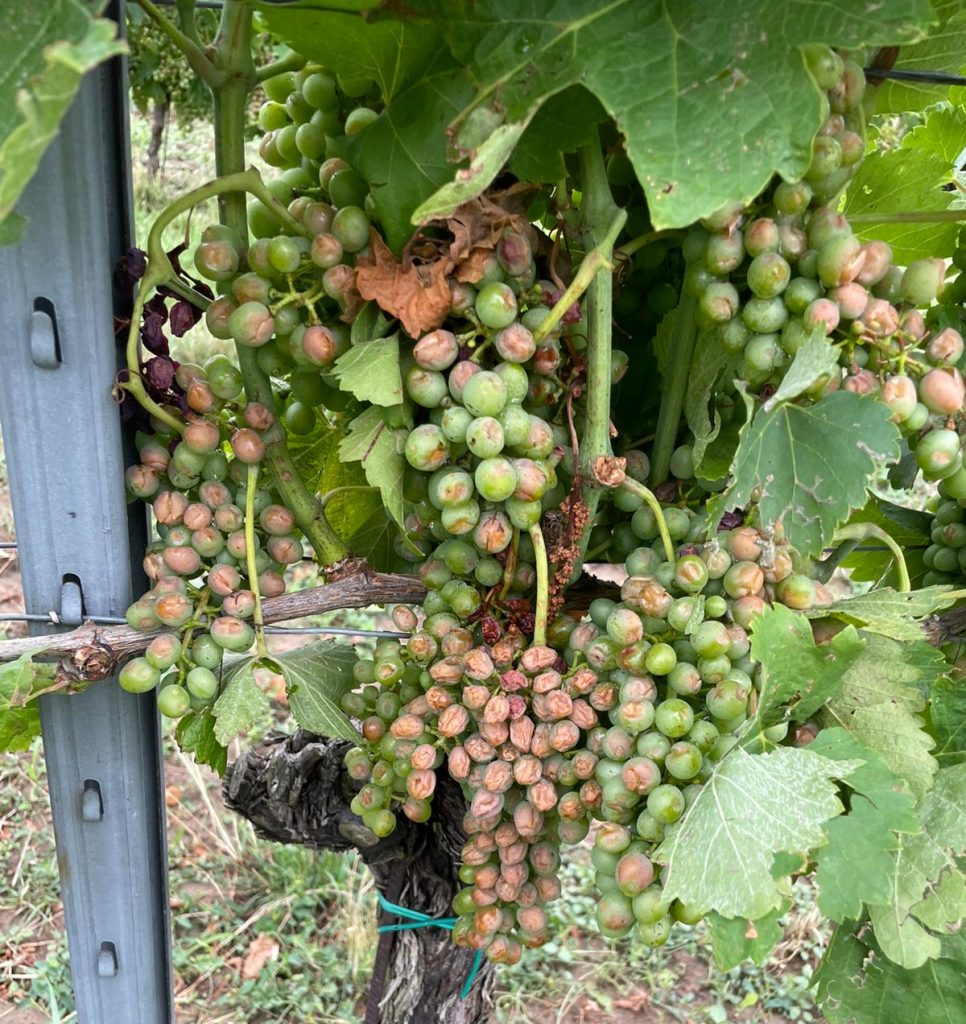
August
On the night of 31 July, hail struck right at the heart of Blaufränkischland. Our vineyards were hit by massive streaks of hail, literally cutting up the grapes and leaves within minutes. The basis for this year’s harvest was severely damaged. We winegrowers have our “workshop” in the open air. Working with and in nature is very fulfilling, but hail, late frost, floods or droughts are becoming ever greater challenges. We hope for a lot of sun so that the heat will dry up the injuries quickly!
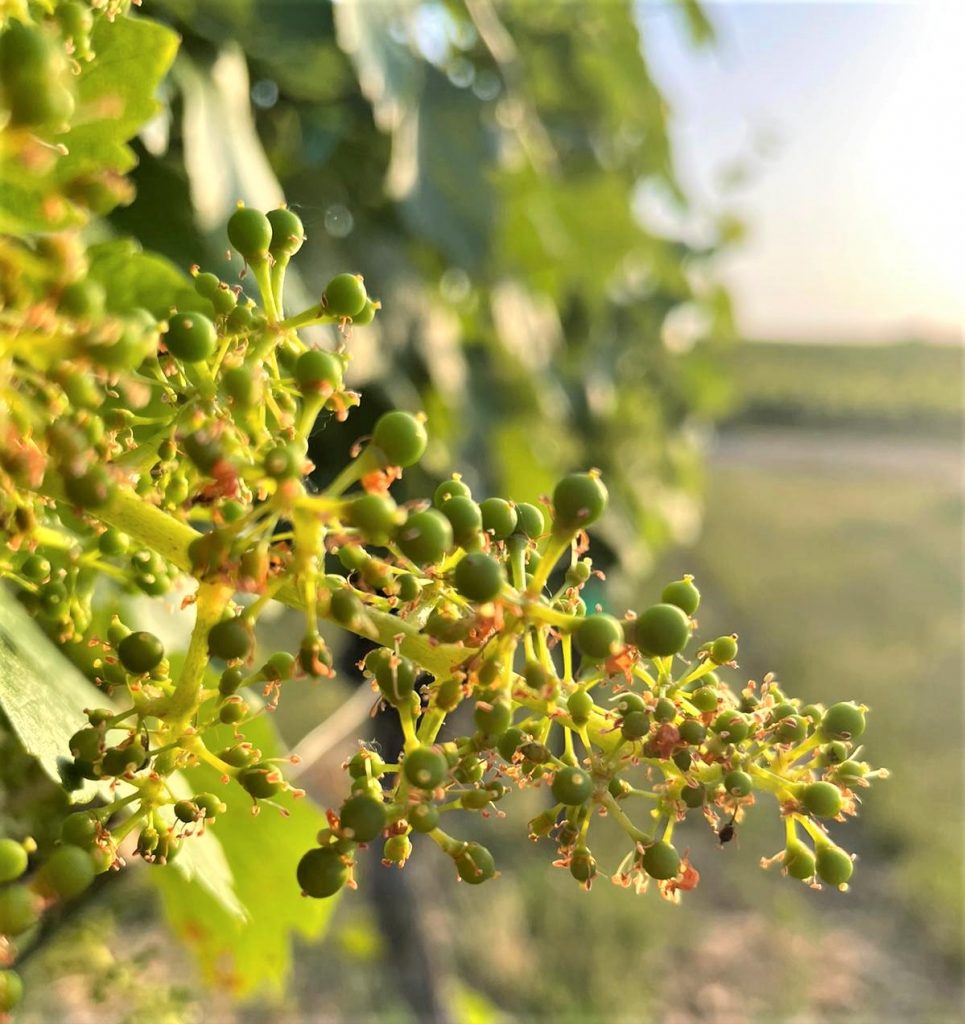
June
Flowering is in full swing. It takes place 45 to 90 days after budbreak. This year we are 1-2 weeks later than in previous years. The flowers are closed with a brown cap that bursts open to reveal the pistil and stamens. The Vitis vinifera vines are oogamus, they virtually self-fertilise. Pollination occurs when the male pollen sticks to the female ovary. Regen oder starke Winde könnten verhindern, dass alle Fruchtknoten bestäubt werden. Therefore, we hope for sunny weather so that there is no “trickling”, which could lead to yield losses in autumn. 😍
The pollinated ovaries develop into berries immediately after flowering, while the unpollinated flowers wither and fall off. The panicle then has larger or smaller gaps. The fruit set is initially small, green and hard, but it enlarges quite quickly and it is at this time that the vines are most vulnerable to animal or plant pests.
The countdown is on: Now there are 100 days left until the grape harvest.
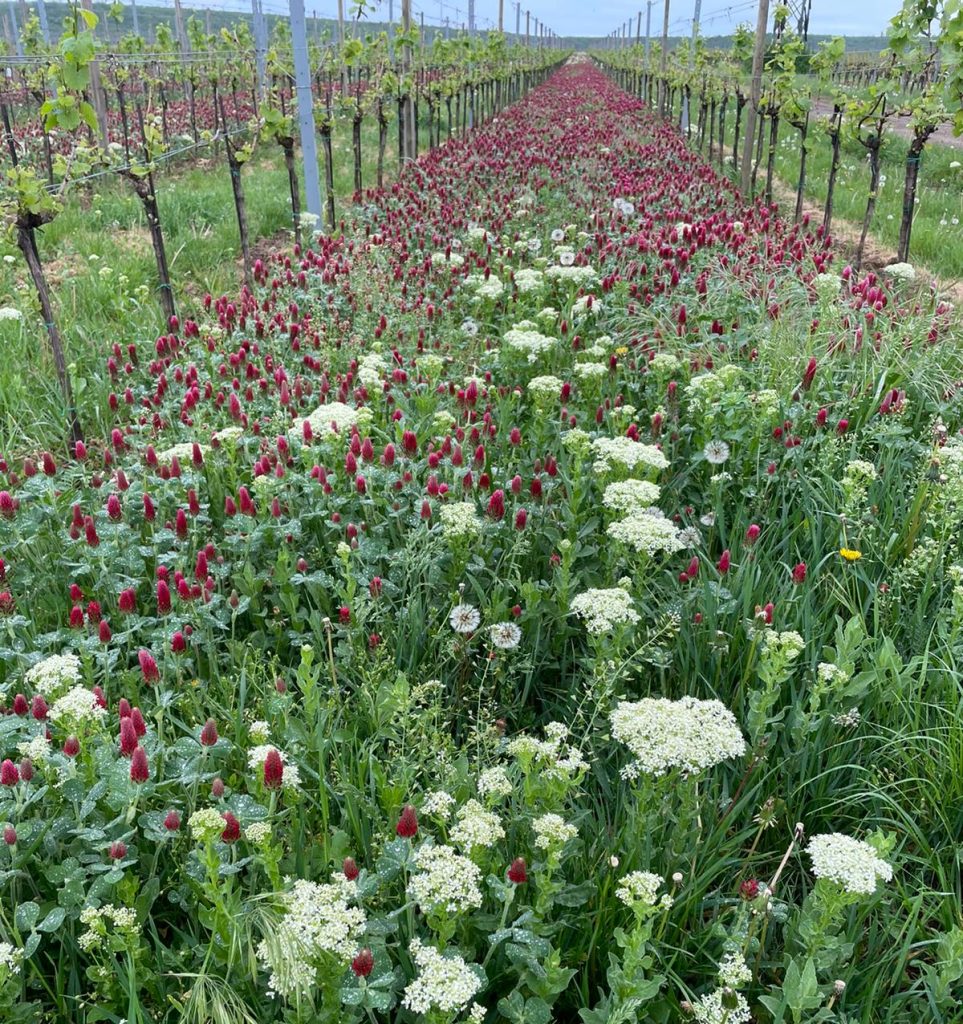
May
Can you feel the magic of the moment? I am really enjoying watching nature awaken. Spring brings us lightness and new beginnings in the most beautiful colours. The legumes in the vineyards have been sown and are valuable sources of nitrogen.
Bacteria make atmospheric nitrogen available for plants.
The legumes produce their own nitrogen fertiliser with the help of nodule bacteria. A classic win-win situation.
Plants that produce their own fertiliser – that may seem surprising at first, but it is reality. Members of the legume family produce the main nutrient nitrogen in their roots and therefore grow quite passably even in unfertilised soil. After all, plant growth is not possible without nitrogen. Field and soybeans, peas, lentils, clover, lupins and lucerne cooperate with soil microbes. The symbiosis brings advantages to both sides.
